Citroen C5 2.7 TDi Tourer Exclusive Review
Citroen C5 2.7 TDi Tourer Exclusive
Can Citroen's big estate measure up to the German competition?
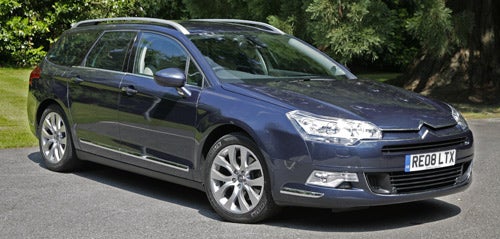
Verdict
When it comes to car-related clichés, Citroën has automotive quirkiness all sewn up. At least, that used to be the case. Following a succession of pathologically bland cars in the 1990s, the French firm has only recently begun to once again pay more than lip service to a heritage rich in engineering innovation and offbeat design.
Of course, cars have evolved almost beyond recognition since Citroën carved out a niche courtesy of forward-looking models such as the Traction Avant and innovations including air suspension or the helical gear pattern that forms the basis of the company’s logo to this day. It’s now digital systems as much as the oily bits that separate the good from the bad and the bland from the grand in the modern automotive jungle.
With all that in mind, how exactly does Citroën’s infotainment kit stack up compared to the competition? Is it, perhaps, permeated with Citroën’s singular tradition of imaginative, independent thinking? If so, is that actually a good thing or is there no place for quirkiness in contemporary infotainment systems?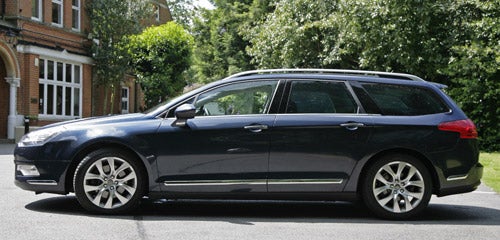
To find out, we snagged an example of the incumbent flagship of Citroën’s range, the C5. It’s a large, comfort-oriented cruiser in the traditional Gallic idiom. It’s not an absolutely brand spankers model having been on the market for around a year. But it is new enough to pack a huge range of in-car technology along with a handful of intriguing driver aids.
Our test C5 is the family-friendly Tourer in range-topping Exclusive trim and benefits from a thorough plundering of the options list. Highlights start with the obligatory sat-nav installation and extend to a hard-drive based music system, voice control and even a lane-departure warning system that gives the driver’s bum a buzzing sensation. Power, meanwhile, comes from the company’s 2.7-litre V6 diesel lump – a 208hp unit with 325lb/ft of torque which feeds the front wheels via a 6-speed automatic gearbox for suitably effortless progress. Oh, and for the record our C5 does indeed come complete with Citroën’s signature hydro-pneumatic suspension.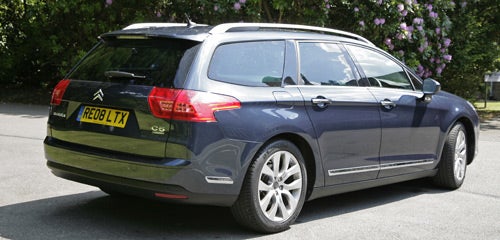
Thus specified, the C5 rocks the price lists at a hefty £30,580. Well into the premium territory that so often proves problematic for middle market brands like Citroën, in other words. But the C5 does have a few things going for it. For starters it’s a big, imposing beast. It certainly looks like thirty grand worth of car. As a Citroën, it also boasts a certain eclectic charm that eludes more resolutely mass market makes such as Ford and Vauxhall. Nevertheless, it still faces a monumental task in taking on the usual German and Japanese suspects.
At first glance, the C5’s infotainment package looks both comprehensive and pretty conventional. There’s a 7in LCD display mounted front and centre on the dash with controls below in the centre console. Key features include the NaviDrive navigation system with RDS-TMC traffic data (a £1,300 option), a CD-ripping audio system with 10GB of storage space for MP3s, voice control and cellular telephony support. The main instrument cluster also includes a secondary display which relays key information to the driver.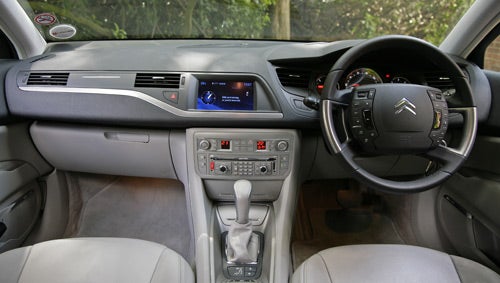
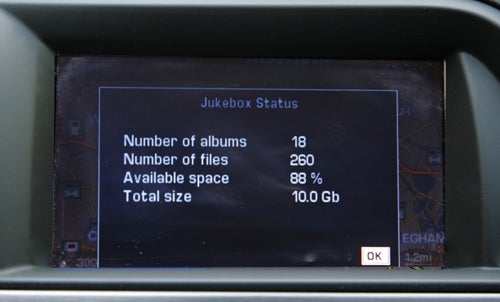
In terms of input, touch-screen is off the menu. Instead, the main console packs a baffling array of tiny buttons augmented by a couple of small scroll wheels. Indeed, as soon as you begin to dig into the C5’s in-car kit it’s apparent that Citroën does things a little differently and not all for the good. 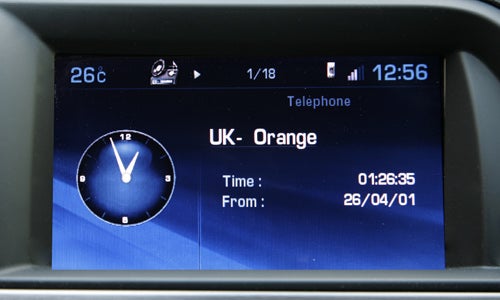
For starters, many of the markings on the controls are so small they absolutely cannot be read at a glance. In fact, some are obscured to such an extent that you need to contort yourself to extreme angles just to read the text. The overall appearance of the system is chronically dated, too, both in terms of the hardware and the onscreen graphics. 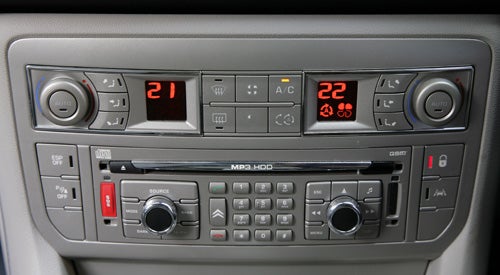
Making matters worse, the onscreen interface is so convoluted and confusing; you have little hope of fumbling your way through without the paper manual. It routinely requires 15 minutes or more of trawling through the manual to activate or access even basic features. It’s as though several different design teams were responsible for putting various parts of the system together and were apparently not on speaking terms for much of the process. The bottom line here is that the lack of intuitiveness forces users to memorise what is quite a complex control panel and interface if they are to have any hope of using it in normal driving conditions. 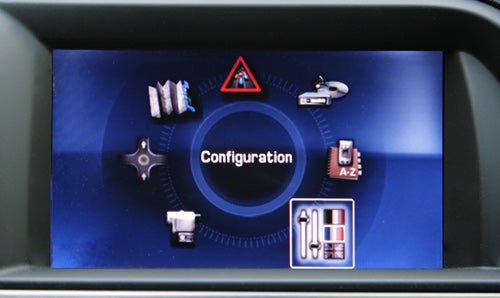
It also doesn’t help that the main screen is relatively low resolution and somewhat offset away from the driver or that Citroën has apparently skimped on translation services for some parts of the English interface. The following garbled mess, quoted word for word, is pretty typical of what the interface routinely spews out:
“The command you are accessing requires you to pronounce one of the voice wording from your directory.”
That said, it’s not all bad news. Although the C5’s multi-function steering wheel is festooned with lots of buttons, it actually works pretty well. Even better is the driver’s instrument cluster and the secondary display within it. It’s so much clearer and classier than the rest of the infotainment platform that we strongly recommend Citroën puts whoever was responsible for it in charge of its broader in-car tech development. 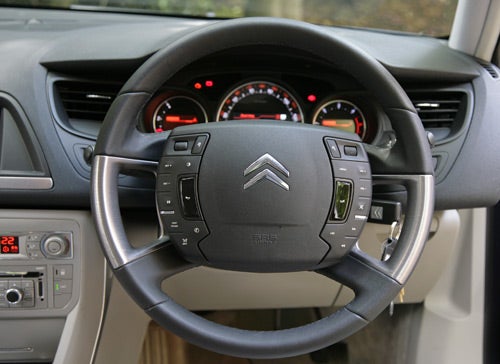
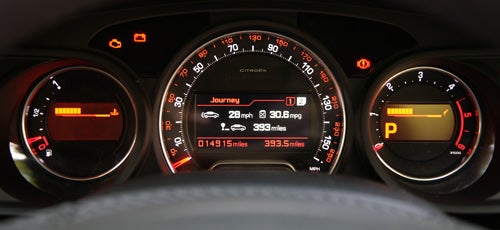
So, with utterly impenetrable ergonomics, a dated appearance and a chaotic interface, the C5’s infotainment platform makes an underwhelming first impression. Perhaps the quality of the individual features can come to the rescue.
What to make of the C5’s entertainment system? The broad specification is moderately promising thanks to support for MP3 playback, CD ripping and 10GB of storage space among other features. But like much of the rest of the infotainment rig, frustration and confusion is never far away.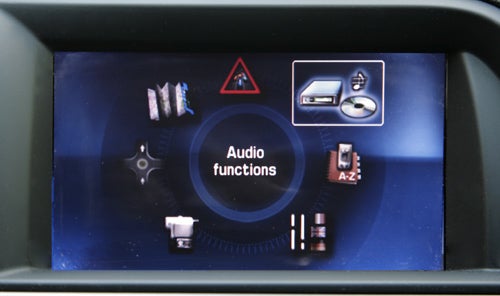
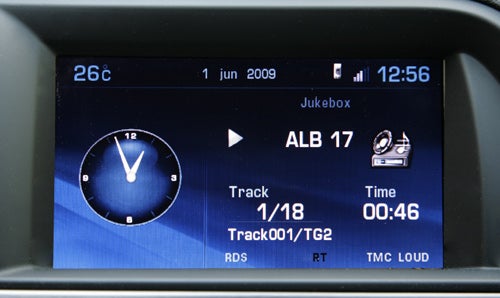
Before we get to our detailed complaints, first a quick breakdown of what the system offers. There’s a single optical drive in the centre console capable of reading both standard RedBook CDs and MP3 CDs. Redbook CDs can be ripped for storage on the 10GB hard drive. The glovebox, meanwhile, houses an array of analogue RCA aux-input sockets including a composite video port, more on which in a moment. Note, however, that there is no digital connectivity, be that general USB or specific iPod support. Finally, there’s also an RDS AM/FM radio tuner.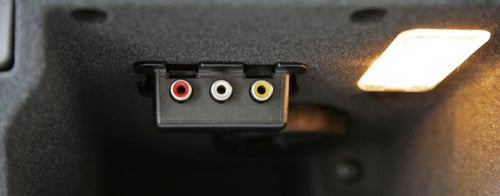
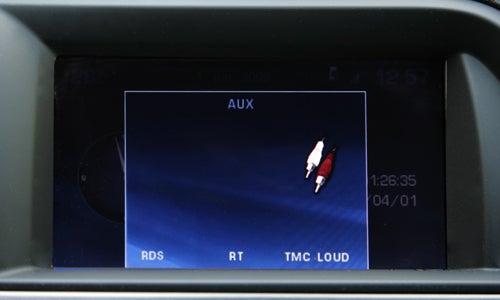
The problems start with the CD ripping. Without any kind of CD database, users must manual assign album, artist and track information. That’s no small task given that the system lacks a touch-screen for text input. But our biggest complaint involves the onscreen interface. In short, it’s completely baffling. Part of the problem is the fact that management of the MP3 jukebox’s content has been completely separated from the playback controls. Often, therefore, you have track lists or albums displayed on the screen but no way of accessing them for playback. 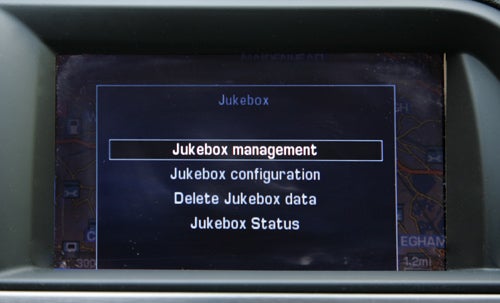
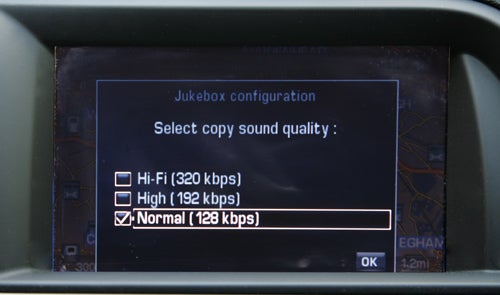
However, pretty much all areas of the interface are hard to fathom. Despite having the manual to hand, for instance, it took us a good five minutes of hammering away at the console controls to work out how to do something as simple as changing the album being played. Admittedly, once learned most functions can be accessed pretty swiftly, but the curve is unnecessarily painful.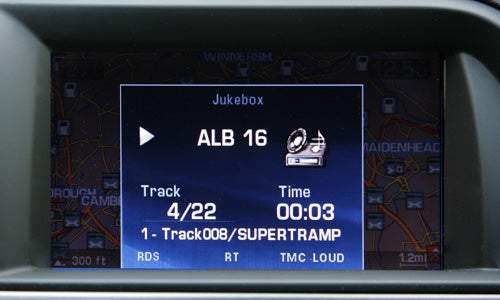
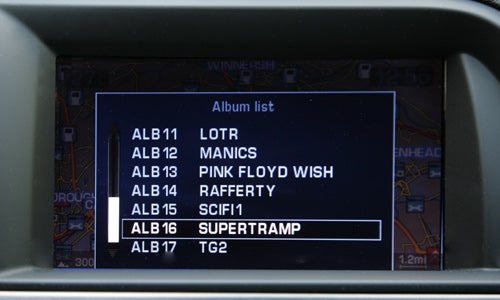
One other idiosyncrasy that we found particularly infuriating is the impatience of the interface. It’s far too quick to give up if you fail to make an input and jump back to displaying the track being played, the navigation map or whatever the previous focus was. In other words, should you become momentarily distracted having drilled down through several layers of options, you’ll be booted out of the menu and forced to start all over again. Maddening! Playlist creation isn’t exactly world beating, either. It can only be done via the jukebox management menu and you can’t add tracks on the fly during playback.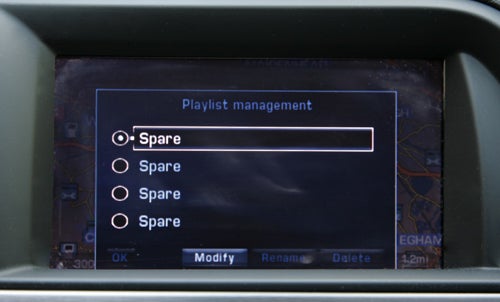
In that context, the multi-function steering wheel provides some welcome respite. The right-hand of the its two scroll wheels allows you to roll through the various on screen options, whether that’s selecting tracks from the jukebox or stations from the RDS tuner. It’s easily the most painless part of the experience.
As for the video playback function, it’s limited to displaying composite analogue video piped through the aux socket in the glovebox. There’s no support for DVDs or video file formats generally, nor a TV tuner. We didn’t have a composite source to hand for quality testing, but frankly we can’t imagine this feature will see a great deal of use.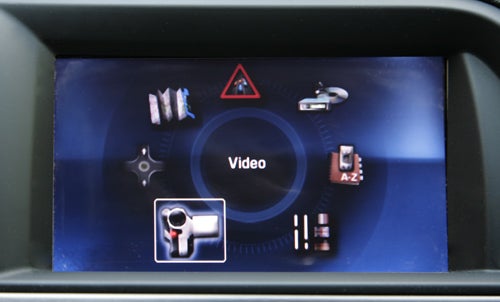
Still, we can report that the audio quality packs plenty of power and betrays little evidence of distortion when you crank up the volume. That said, the soundstage is pretty muddy – clarity certainly isn’t a strong point.
Factory fitted navigation tends to be short on features compared with the latest aftermarket kits. Such is our usual refrain at this stage of our car tech reviews. We were not, therefore, expecting the C5’s sat-nav to blow us away with high-tech traffic analysis, online services or anything actually innovative. Nevertheless, Citroën’s NaviDrive system still pulled off the impressive trick of undershooting our modest expectations.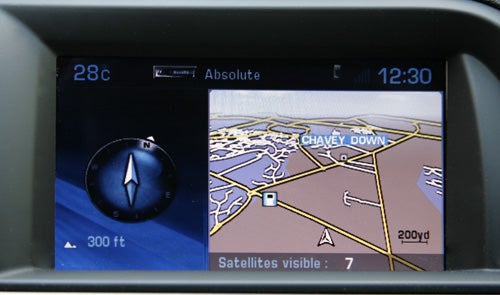
First up, support for postcode input is conspicuous by its absence. Destination input options are restricted to full street and town address or grid co-ordinates. The lack of touch-screen input hardly helps, either. Then there’s the rough and ready map rendering. Whether viewed in 2D top down or pseudo 3D, it ain’t pretty. 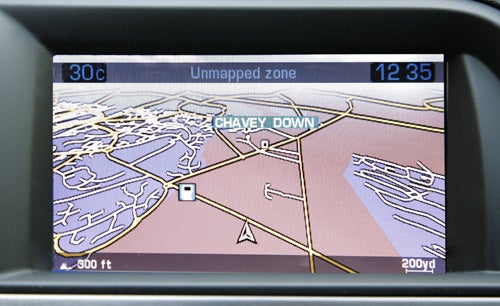
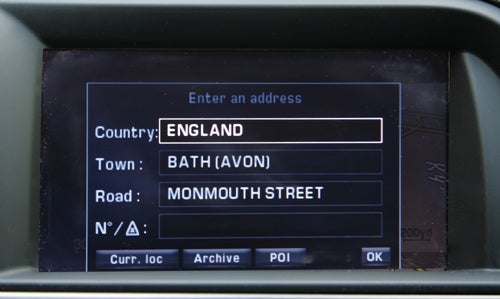
Consequently, address input is laboriously achieved via the small scroll wheel on the main console. The slicker-operating right-hand scroller on the steering wheel can also be used (the left is reserved for controlling the instrument cluster), but in practice it’s every bit as fiddly.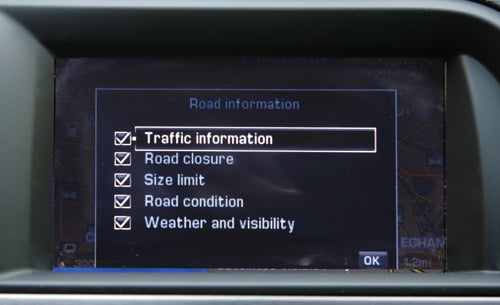
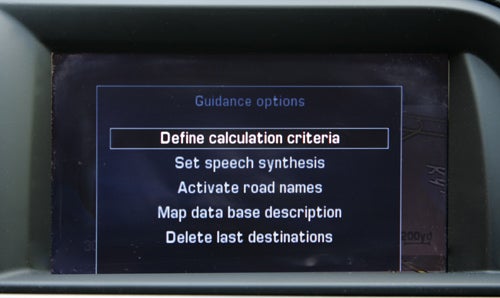
Having said all that, once on the move, NaviDrive works well enough. It does at least include RDS-TMC traffic data giving you a modicum of awareness of traffic conditions. It’s also a hard drive based rig programmed with European-wide maps which is always preferable in terms of both performance and ease of updates to the DVD-based alternatives. Likewise, in our experience, the voice guidance notes are timely and accurate. What’s more, with the secondary display in the instrument cluster providing an alternative to the main display, you needn’t gaze too often at the ghastly map rendering.
In the year 2009, you might think Bluetooth connectivity would be standard on any well specified car priced around the £30,000 mark. Unfortunately, car dealers are addicted to squeezing cash out of customers courtesy of the options list, so it’s no real surprise to find that Bluetooth is a £175 option even on this top spec C5 wagon.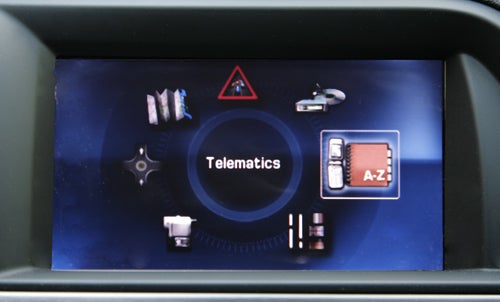
Sadly, it’s not an option fitted to our test car so we can’t comment on handset compatibility. With no Bluetooth, users are left with the distinctly suboptimal SIM slot in the main console. Apart from the tedium associated with swapping SIMs from handset to dashboard, this setup restricts phonebook and contact access to those stored on your SIM. Admittedly, the system does allow you to transfer data in both directions, but none of this is much use if you store you contact data directly on your handset rather than the SIM.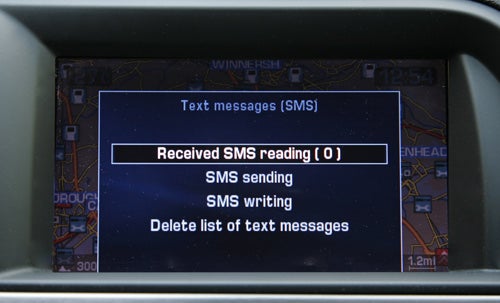
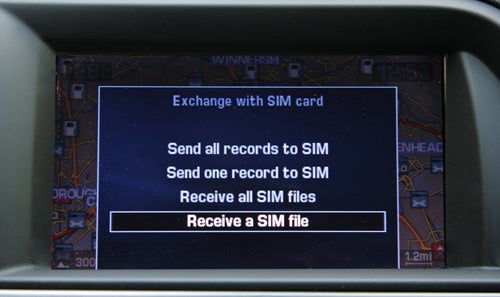
As for voice control of the telephony features, unlike more advanced systems Citroën’s requires the creation of individual voice tags for each contact. It’s just another layer of complexity and hassle that the driver could do without. For frequently called contacts, setting up a few voice tags is simple enough. But users with big contact books are hardly likely to want to generate tags for hundreds of entries.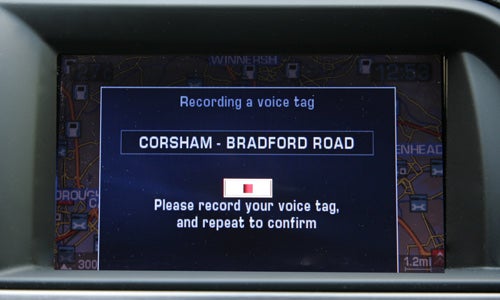
As ever, the system’s single saving grace is the multi-function steering wheel which makes call management on the move a pretty smooth process. You can initiate or end calls as well as browse recent numbers without taking your hands off the steering wheel.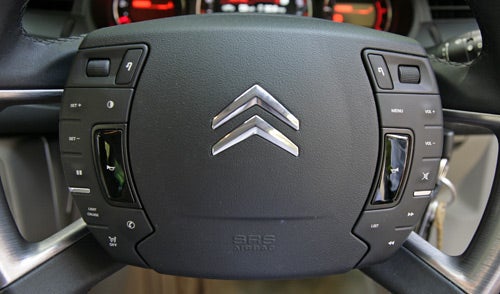
If C5’s infotainment tech has been a bit of a let down, can it stage a comeback when it comes to comfort and safety? You’d hope so given Citroën’s track record in these departments. Certainly, there’s no shortage of kit designed to get the job done.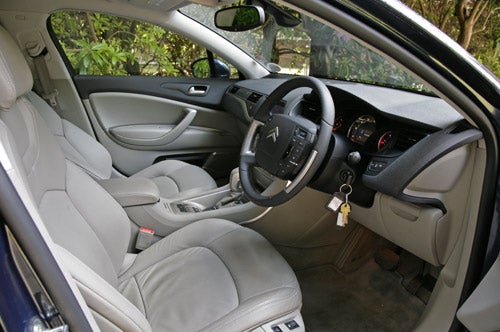
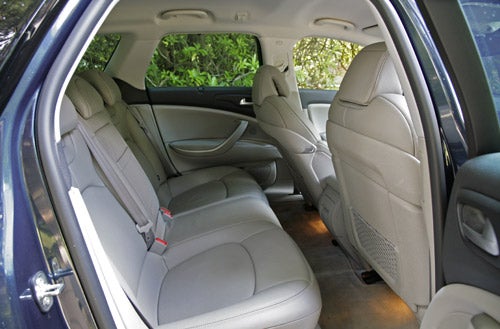
First up we have Citroën’s signature hydro-pneumatic suspension, known here as Hydractive III. For the C5 it’s a switchable system with standard and sport mode. While the C5 is never going to be a true driver’s car, the ability to firm up the suspension a little and thereby remove the most extreme body movements is welcome. Meanwhile, in standard mode passengers can enjoy a suitably pillowy and Citroën-esque experience. It’s a welcome alternative to the taut, nuggety ride quality delivered by the usual German suspects.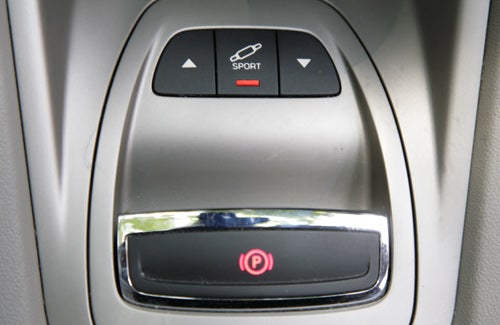
That said, the C5 does suffer from a touch of front axle brittleness and judder over sharp road imperfections. It somewhat spoils the impression of serene progress. It also makes the chassis seems ever so slightly flimsy as well as giving the impression that Citroën is stretching the capabilities of the car’s platform beyond its comfort zone in the creation of such a big, heavy estate model.
Hydractive III is also height adjustable. Along with the ability to lower the car to ease access to the luggage compartment, the system offers two increased height modes. The highest mode boosts clearance for tricky ramps and obstacles and is operational up to 6mph. The medium height mode increases that limit to 25mph and is designed for bad road surfaces. 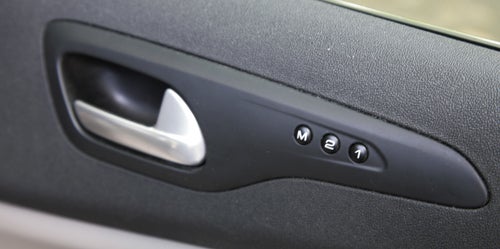
Further easing the driving experience, the C5 sports a wide range of driver aid and comfort features. There’s a simple but effective cruise control system accessed via the multi-function steering wheel, directional Xenon headlamps (an £805 option), parking sensors with on-screen proximity display and full electric front seats with two memory positions for the driver’s throne, for instance. What’s more, the dual-zone climate control extends to the glovebox compartment.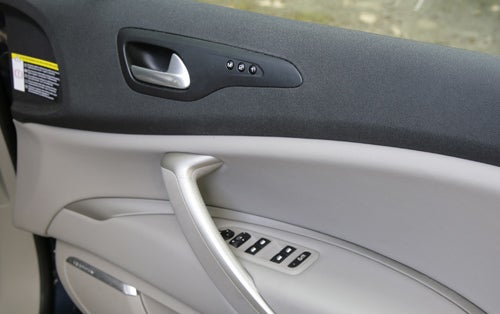
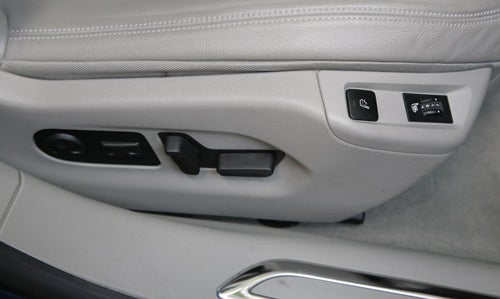
Another nice party trick is the fully motorised tailgate. It opens with the press of the key fob and closes via a button on its trailing edge. It’s a nice touch given the large size and weight of the tailgate. In fact, the only obvious omission from the comfort-oriented feature list is keyless go.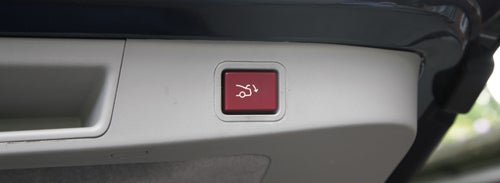
In safety terms, the C5 delivers an interesting mix of features. Along with the usual panoply of airbags, the C5 boasts tyre pressure monitors, stability control and emergency brake assist. Slightly more out of the ordinary is the lane departure warning system, a £305 option.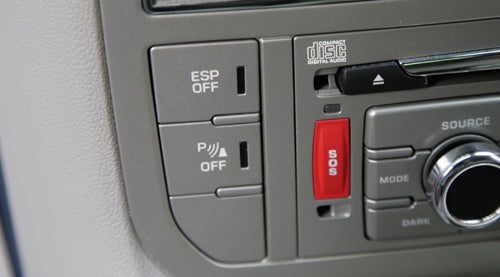
The idea is that sensors scan road markings and detect when the car is drifting out of a lane. It then alerts the driver courtesy of a firm buzzing sensation through the seat base. Amusingly, it informs you of the direction of the lane drift by buzzing the relevant side of your bum. Exactly how much use this is in reality is difficult to gauge. We doubt it would be enough to prevent accidents caused by drivers falling asleep at the wheel, for instance.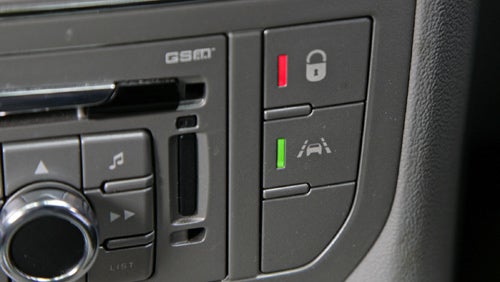
But what we can say for sure is that in practice it’s pretty irritating. Relatively frequent lane changes are part and parcel of today’s busy roads and the consequent constant bum buzzing quickly becomes pretty tiresome. Fortunately, the system can be disabled.
Finally, we have Citroën Assist. This is essentially an automated voice hotline through to the AA’s European break down service, complete with location forwarding. It’s not as sophisticated as some competing systems, but it’s nice to know you can call for help in the event of a breakdown even if your mobile phone has run out of juice or been misplaced.
If you’ll forgive a little occupational proselytising, most cars in this game fall into one of three categories. Those you expect to like and do indeed fulfill your expectations. Those you try to hate but can’t help being won over by. And then you have cars like the C5. Cars you want to like but can’t quite see past the shortcomings.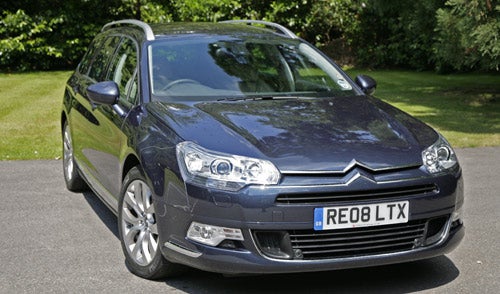
Make no mistake, there is indeed plenty to like about the C5. Most significant is its unapologetically comfort-centric setup. It’s an extremely relaxing car to drive thanks to the hydro-pneumatic suspension and a decent V6 diesel engine and gearbox (note that Citroën has just announced an upgraded 3.0-litre turbo diesel engine that’s due to replace the 2.7-litre engine in our test car).
In terms of driving comfort and pleasure, if not cabin quality and ambiance, we reckon the vast majority of the population would be better off with a C5 than the pseudo-sporty German alternatives. We live in a peculiar age where most buyers seem to be besotted by sportiness at the same time as being hysterical about speeding, so the honesty of the C5 is extremely welcome. 
Nevertheless, it’s a great shame that the C5’s in-car kit is so shoddy. Whether it’s features, presentation, usability or ergonomics, this car’s infotainment system falls well short of our expectations. The ergonomics of the main console controls in particular are the worst we’ve seen as is the logic and hierarchy of the infotainment interface. In this regard, the gap between Citroën and bona fide premium brands such as Audi, BMW and Lexus looks bigger than ever.
There are, however, grounds for some hope. The quality of the instrument cluster and the secondary display therein is much, much better. Frankly, these aspects feel like something from another car altogether. Citroën should build on that. It should also take a lead from some of the more innovative work being done by the likes of Fiat with its Blue&Me platform developed in partnership with Microsoft, as seen in the Fiat 500.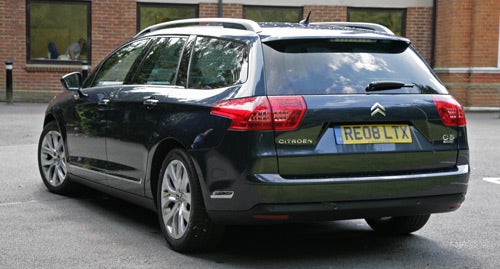
In that sense, Citroën’s typically Gallic sense of independence needs to take a back seat. It simply has too much ground to make up to go it alone with infotainment technology. Instead, it needs to partner with established experts in the field and then leverage tried and tested core technologies to which it can then add its own flavour. Again, the model to look to here is Fiat and its Windows CE-based Blue&Me platform. If Citroën can do that, while still retaining its unique driving experience, it will once again be able to offer buyers something truly compelling and different.

